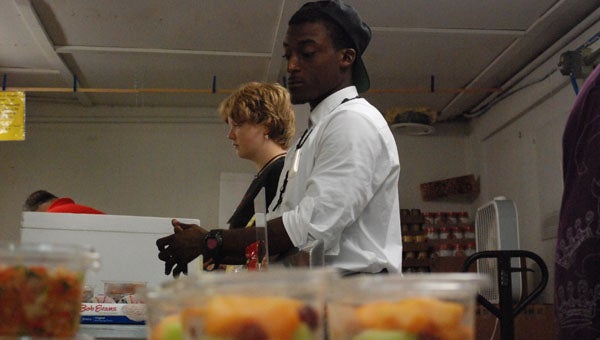Community efforts to provide healthy food for the hungry
Published 5:24 pm Saturday, August 23, 2014

JONATHAN ROWE | DAILY NEWS
FEEDING THE HUNGRY: Volunteers serve food to those in need at Eagle’s Wings during USDA Strikeforce Initiative Day.
On Saturday, a local church celebrated the first harvest of its community garden mission ministry.
Asbury United Methodist, who started the garden in memory of a lifelong member, Ruby Pippin, has been growing sweet potatoes, string beans and okra. Most of the vegetables have been donated to the Zion Homeless Shelter and Kitchen, but organizations like Eagles Wings, the Salvation Army and the Food Bank of the Albemarle will get a share of the crops to distribute to those in need of food.
Community gardens are one way to provide food for the hungry. Another way is gleaning, which involves harvesting surplus crops from a grower’s field. The Food Bank of the Albemarle conducts gleaning projects in its 15-county service area, which allows food to be distributed to food pantries in local communities.
Another community garden project in Aurora provides healthy eating opportunities in the county and gives students who maintain it employment opportunities. This summer, five local teens managed 12 raised-bed gardens and made a plan to give the community access to healthy produce. There is an also an opportunity for those who do not have the land to grow vegetables. A community garden at Warren Airfield allows anyone to rent a plot and grow their own produce.
Projects such as Ruby’s Garden are links in a much bigger chain that help communities remain self-sufficient and feed those less fortunate. The efforts of these individuals, who take the time to do projects like these, are invaluable to the overall campaign to feed the hungry in the area. These projects also promote healthy eating in the community. Food that is raised locally and given to local food pantries, whether through gleaning or community gardens, make it possible for these pantries to operate mobile food pantries and make home deliveries to those who have health conditions and cannot visit the pantry.
Projects to feed the hungry are great and much needed, but the fact that healthy produce and other foods are being raised and donated to organizations for distribution make it that much more important.




